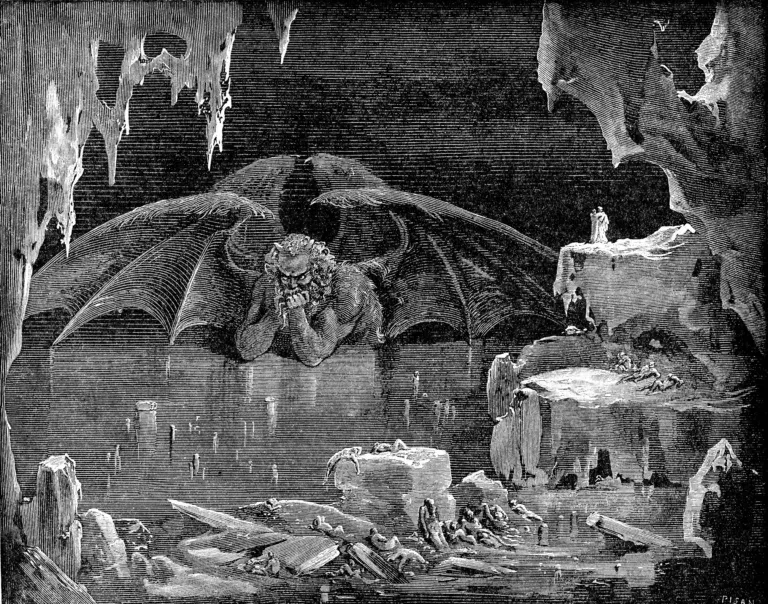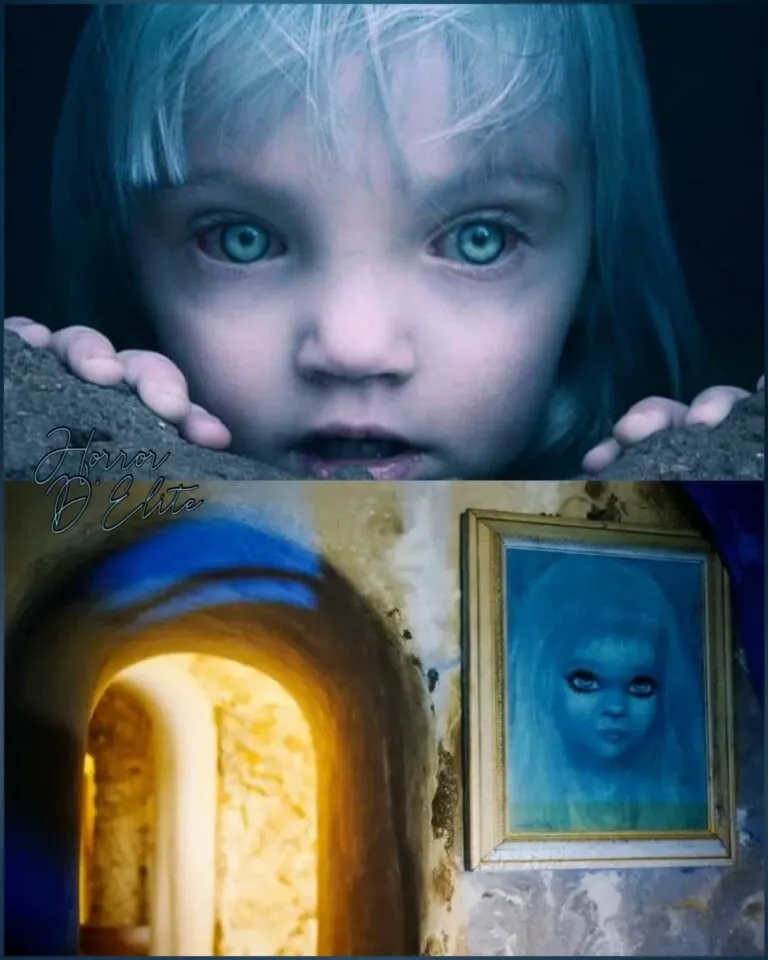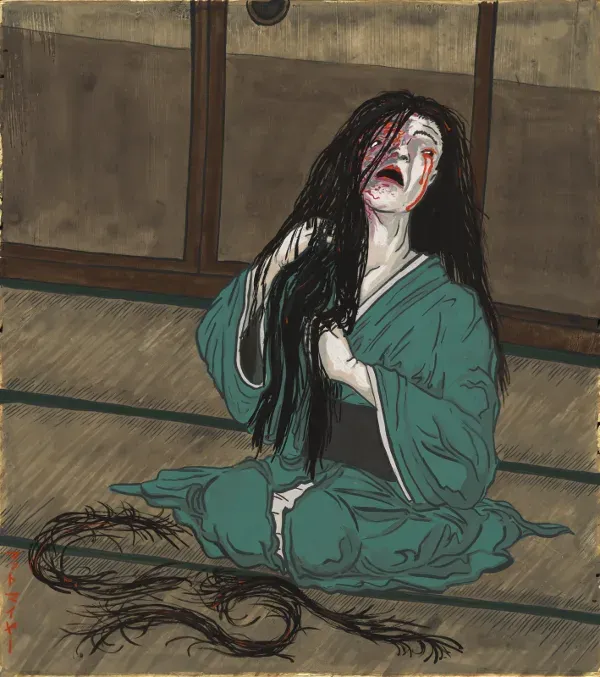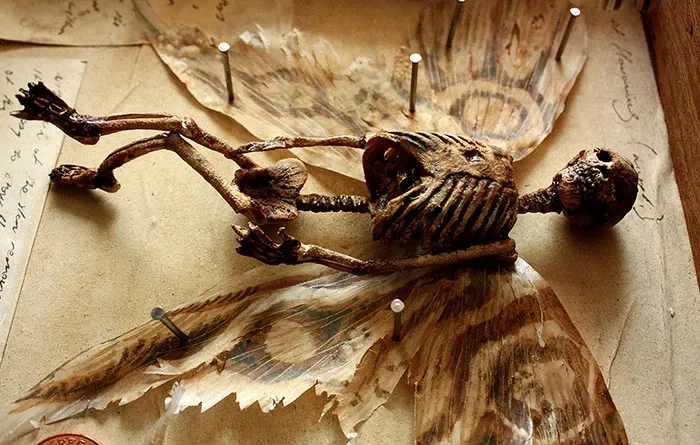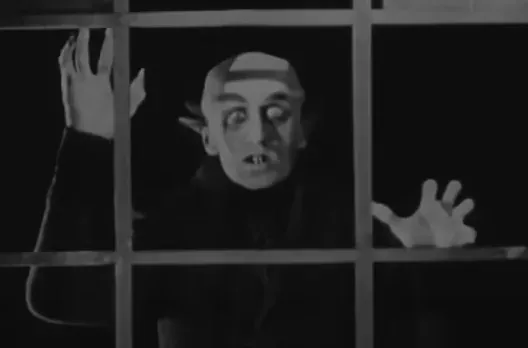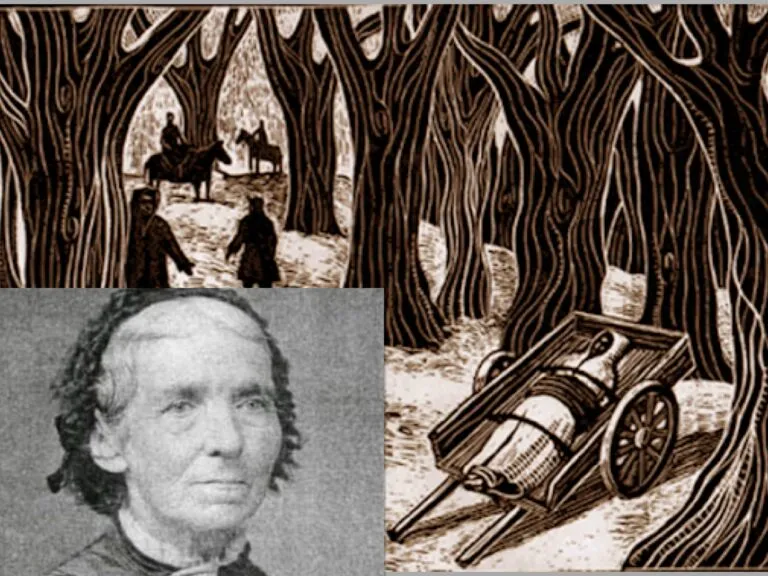The Cabaret de l’Enfer, the Cabaret du Ciel, and the Cabaret du Néant
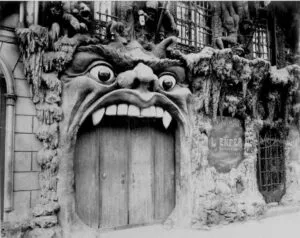 The Cabaret de l’Enfer, the Cabaret du Ciel, and the Cabaret du Néant
The Cabaret de l’Enfer, the Cabaret du Ciel, and the Cabaret du Néant
We find ourselves in Paris, at the end of the 19th century, in what we all know as the Belle Epoque. Antonin Alexander created the Cabaret de L’Enfer and the Cabaret de Ciel, both located on Boulevard de Clichy side by side, managing them until 1950. But what was so special about these two establishments? One was heaven, and the other was hell. They were absolutely “spectacular.”
The Cabaret de l’Enfer
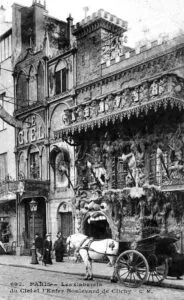 Parisian flâneurs were drawn to a unique experience when approaching the Cabaret de l’Enfer, located in the heart of the city and known for its extravagance and dark charm. Entering the venue was through the monumental mouth of Leviathan, a symbol of power and destruction, symbolically swallowing the damned who crossed the threshold. The doorman, dressed in a disturbing uniform, welcomed customers with a sinister and provocative phrase: “Entrez et soyez damnés,” inviting them to enter and indulge in sin and damnation.
Parisian flâneurs were drawn to a unique experience when approaching the Cabaret de l’Enfer, located in the heart of the city and known for its extravagance and dark charm. Entering the venue was through the monumental mouth of Leviathan, a symbol of power and destruction, symbolically swallowing the damned who crossed the threshold. The doorman, dressed in a disturbing uniform, welcomed customers with a sinister and provocative phrase: “Entrez et soyez damnés,” inviting them to enter and indulge in sin and damnation.
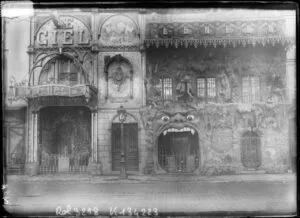 Once inside, visitors found themselves in a world beyond reality, where the macabre and the fantastic merged into a whirlwind of sensations and emotions. Waiters, disguised as demons and imps, moved among the tables with eccentric cheerfulness, shouting orders and adding grim jokes with enigmatic phrases like “A sulphurous coffee” or “A deadly beer for table 666.” The atmosphere was pervaded by a sense of mystery and excitement, with palpable tension in the air.
Once inside, visitors found themselves in a world beyond reality, where the macabre and the fantastic merged into a whirlwind of sensations and emotions. Waiters, disguised as demons and imps, moved among the tables with eccentric cheerfulness, shouting orders and adding grim jokes with enigmatic phrases like “A sulphurous coffee” or “A deadly beer for table 666.” The atmosphere was pervaded by a sense of mystery and excitement, with palpable tension in the air.
The facade of the cabaret was adorned with stucco figures, including numerous female nudes enveloped in hellish flames, symbols of temptation and sin. Inside, darkened walls and sculpted ceilings created a claustrophobic and sinister atmosphere, with images evoking the horrors of hell and the torments of the damned.
For a modest surcharge, patrons could attend a grand guignol-style show, held every evening until the early hours of the morning. This show, composed of diabolic attractions and bloody scenes, crudely and realistically depicted the ordeal of the damned in Dante’s infernal circles, adding an additional dimension of terror and fascination to the already surreal atmosphere of the Cabaret de l’Enfer.
 The Cabaret du Ciel
The Cabaret du Ciel
The Cabaret du Ciel, also known as the Cabaret of Heaven, represented the heavenly counterpart to the famous Cabaret de l’Enfer, located right next to the former on the same street, Boulevard de Clichy.
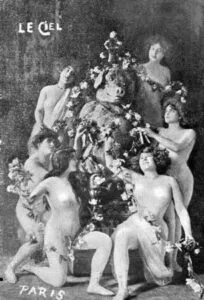 Inside the Cabaret du Ciel, patrons could immerse themselves in an experience completely different from its infernal counterpart, starting from the exterior design and continuing with the unique atmosphere that characterized the venue. The facade of the Cabaret du Ciel was painted in white and blue, adorned with angelic figures, conveying a sense of serenity and purity.
Inside the Cabaret du Ciel, patrons could immerse themselves in an experience completely different from its infernal counterpart, starting from the exterior design and continuing with the unique atmosphere that characterized the venue. The facade of the Cabaret du Ciel was painted in white and blue, adorned with angelic figures, conveying a sense of serenity and purity.
Upon crossing the threshold, visitors were greeted by a sweet harp melody, while a master of ceremonies, dressed like a priest, outlined the otherworldly-themed performances. Inside the restaurant, in addition to the classic beer, “angel beer” was served, while St. Peter himself dispensed “holy water,” accompanied by a theatrical reenactment of the highlights of Dante Alighieri’s Divine Comedy.
A peculiar feature of the Cabaret du Ciel was the presence of a large golden pig in the center of the venue, surrounded by candles, perhaps symbolizing celestial abundance and prosperity. Every detail contributed to creating a mystical and surreal atmosphere in which visitors could immerse themselves and experience something truly unique.
The Cabaret du Néant
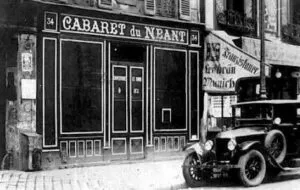 The Cabaret du Néant, also known as the Cabaret of Nothingness, had its roots in Brussels before moving to Paris and even promoting shows in New York. Located not far from the famous Cabaret de L’Enfer and the evocative Cabaret du Ciel, on Boulevard de Clichy, it was part of a trio of afterlife-themed venues among the most renowned in Montmartre.
The Cabaret du Néant, also known as the Cabaret of Nothingness, had its roots in Brussels before moving to Paris and even promoting shows in New York. Located not far from the famous Cabaret de L’Enfer and the evocative Cabaret du Ciel, on Boulevard de Clichy, it was part of a trio of afterlife-themed venues among the most renowned in Montmartre.
Considered one of the forerunners of modern themed venues, the Cabaret du Néant focused on the theme of death. Initially founded as “Cabaret philosophique” in Brussels in 1892, then moved to Boulevard Rochechouart in Paris under the name of Cabaret de la Mort (Cabaret of Death), it underwent a renaming to “Cabaret du Néant” to make the atmosphere less frightening for both patrons and neighborhood residents. The cabaret finally found its definitive location at number 34 Boulevard de Clichy, where it remained until its closure. In 1896, the venue began sponsoring performances in New York as well, at the Casino Chambers on 39th Street and on Broadway.
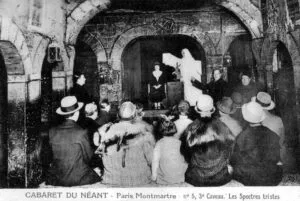 Inside the cabaret, visitors were greeted by a monk who led them into the common room, where the waiters were dressed as gravediggers or even skeletons. An adjacent room was reserved for magic shows, which often involved the audience present.
Inside the cabaret, visitors were greeted by a monk who led them into the common room, where the waiters were dressed as gravediggers or even skeletons. An adjacent room was reserved for magic shows, which often involved the audience present.
Among the offerings of the venue were the “bières,” a pun referring to both beer and coffin (“bier”) in French. In the “Salle d’Intoxication” (Intoxication Room), decorated with chandeliers made of human bones, customers could sip alcoholic beverages from skull-shaped cups on tables resembling coffins.
The interior decorations consisted mainly of skeletons and human bones, creating a gothic and eerie atmosphere. The shows were characterized by a subtle irony mixed with a sense of fear. Furthermore, the Cabaret du Néant was known for hosting one of the most original and astonishing presentations of the Pepper’s Ghost, an attraction that captured the audience’s attention. The Scientific American magazine praised the cabaret’s exhibition in New York as one of the most interesting performances based on the principle of the famous Pepper’s ghost.
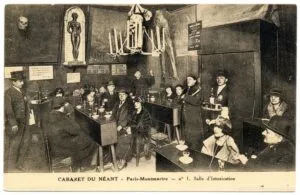 Unfortunately, none of these venues have survived to the present day. In 1950, civic numbers 53 and 54 of Boulevard Clichy were demolished, bidding farewell forever to the Cabaret du Ciel and the Cabaret de l’Enfer, to make way for a supermarket. While at number 34, a pharmacy has supplanted the Cabaret du Neant.
Unfortunately, none of these venues have survived to the present day. In 1950, civic numbers 53 and 54 of Boulevard Clichy were demolished, bidding farewell forever to the Cabaret du Ciel and the Cabaret de l’Enfer, to make way for a supermarket. While at number 34, a pharmacy has supplanted the Cabaret du Neant.

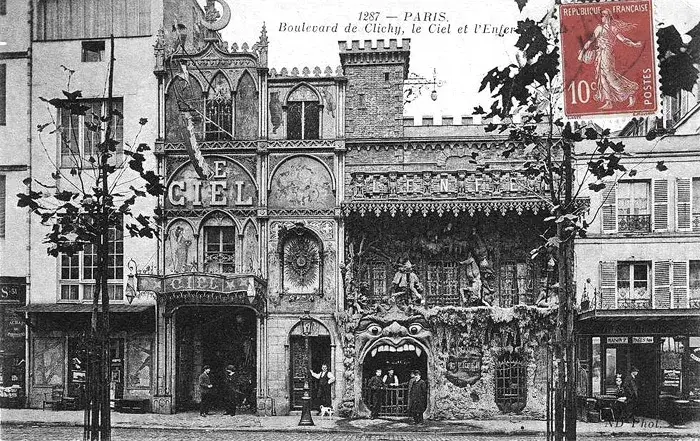
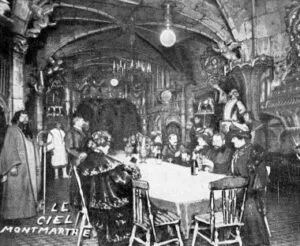 The Cabaret du Ciel
The Cabaret du Ciel